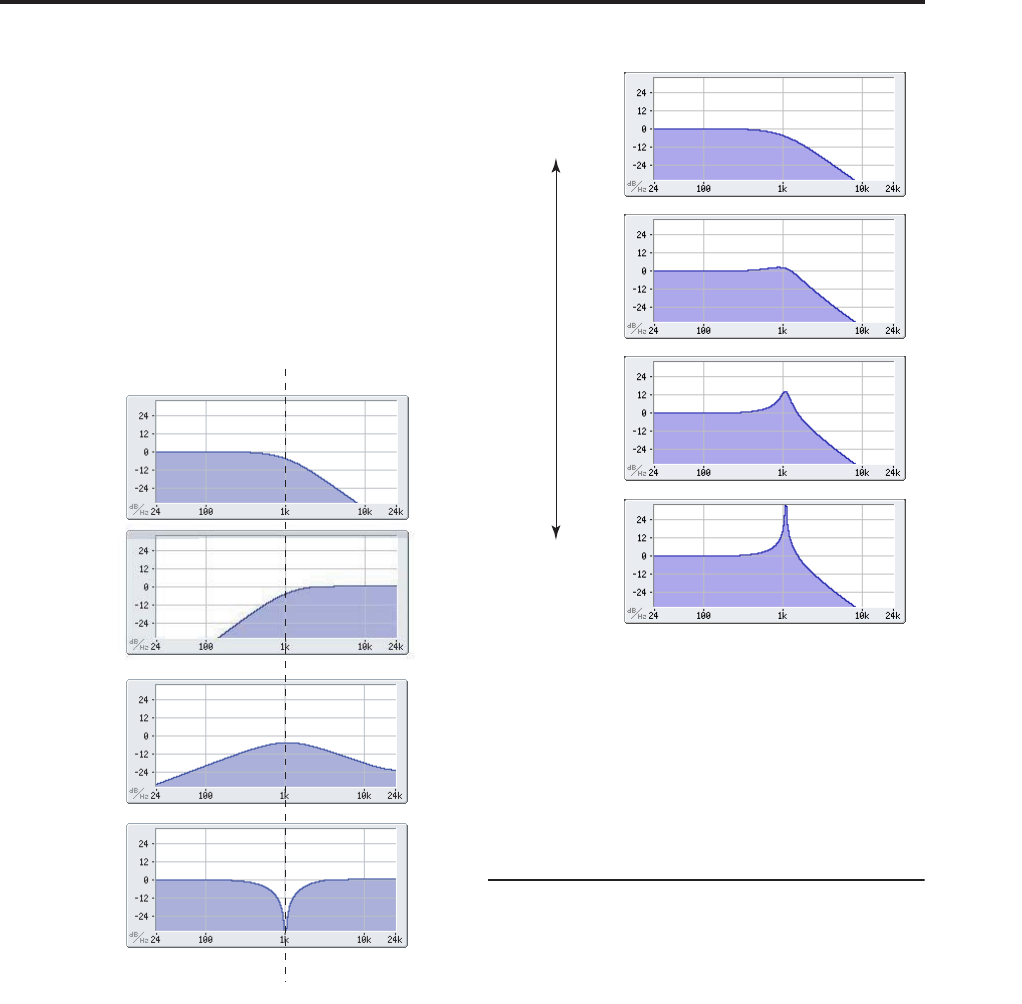
Using Filters
61
frequencies, its effect can change dramatically
depending on the cutoff setting and the oscillator’s
multisample.
With low resonance settings, you can use the Band
Pass filter to create telephone or vintage phonograph
sounds. With higher resonance settings, it can create
buzzy or nasal timbres.
Band Reject. This filter type–also called a notch filter–
cuts only the parts of the sound directly around the
cutoff frequency. Try modulating the cutoff with an
LFO to create phaser-like effects.
Filter Types and Cutoff Frequency
Resonance
Resonance emphasizes the frequencies around the
cutoff frequency, as shown in the diagram below.
When this is set to 0, there is no emphasis, and
frequencies beyond the cutoff will simply diminish
smoothly.
At medium settings, the resonance will alter the timbre
of the filter, making it sound more nasal, or more
extreme. At very high settings, the resonance can be
heard as a separate, whistling pitch.
To make the resonance track the keyboard pitch, see
“Key Follow,” on page 65 of the Parameter Guide.
Modulating the filters
You can modulate the filter cutoff frequency using the
Filter EG, the LFOs, keyboard tracking, and other
built-in and MIDI controllers. This is a great way to
add a rich variety of tonal change to the sound.
Filter EG
The Filter EG is a multi-stage envelope, which you can
use to modulate the filter (naturally!) as well as other
Program parameters. The EG itself is set up on the
Filter EG tab; the way that it affects the filters is
controlled by the parameters described below, on the
Filter Mod tab:
The Intensity to A and Intensity to B settings control
the basic amount of EG modulation for filter
frequencies A and B, respectively, before other
modulation.
The Velocity to A and Velocity to B settings let you use
velocity to scale the amount of EG modulation.
The AMS setting selects a AMS modulation source to
scale the amount of the Filter EG applied to Filters A
and B. The two filters share a single AMS source, with
separate intensity settings.
Low Pass
High Pass
Band Pass
Band Reject
Cutoff Frequency
Low resonance
High resonance


















